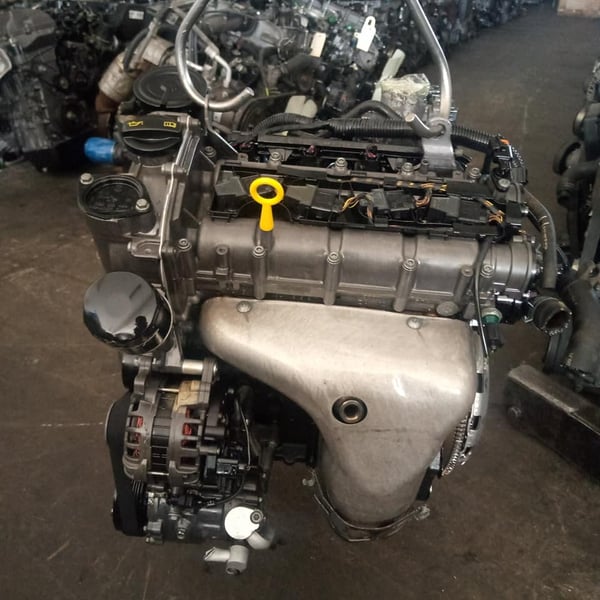Extend the lifespan of your clp engine with regular care.
Extend the lifespan of your clp engine with regular care.
Blog Article
Just How a Clp Engine Can Enhance Performance in Different Industries
The advent of CLP engines notes a substantial shift in functional performance across various fields, driven by their capability to optimize fuel intake and decrease downtime. As companies significantly focus on sustainability along with efficiency, the function of CLP engines ends up being even much more important.
Overview of CLP Engines
CLP engines, or Continuous Liquid Propellant engines, represent a substantial improvement in propulsion innovation, particularly for area applications. These engines use a constant feed system that enables the sustained expulsion of propellant, causing enhanced performance and efficiency compared to standard strong or hybrid propulsion systems. By preserving a constant circulation of fluid propellant, CLP engines can accomplish much more specific thrust control, which is important for maneuvering spacecraft in numerous mission scenarios.
The layout of CLP engines incorporates innovative products and innovative gas administration systems. clp engine. This results in reduced weight and raised integrity, essential elements for long-duration room objectives. The continual operation reduces the danger of combustion instability, a typical difficulty in conventional rocket engines.

Advantages in Production
The manufacturing of Constant Liquid Propellant (CLP) engines provides numerous remarkable benefits that improve both performance and cost-effectiveness. Among the main benefits is the streamlined manufacturing procedure, which lowers the complexity related to conventional propulsion systems. By utilizing fluid propellant, producers can accomplish better accuracy in engine efficiency, resulting in optimized power result and decreased waste.
Furthermore, CLP engines promote a greater level of modularity, permitting less complicated integration into numerous production lines. This adaptability can considerably reduce preparations and boost overall operational flexibility. Using CLP modern technology also often tends to decrease the requirement for considerable upkeep as a result of fewer moving parts, which equates right into decreased downtime and operational costs.

Applications in Logistics
Leveraging Continuous Liquid Propellant (CLP) engines in logistics uses substantial benefits in functional effectiveness and dependability. These engines provide a durable remedy for different transport needs, making it possible for the smooth movement of items across vast ranges. The intrinsic layout of CLP engines enables for constant power output, which equates right into smoother and a lot more predictable transportation routines.
One of the crucial applications of CLP engines in logistics remains in sturdy freight transport, where they can drive both ground and airborne lorries. Their capacity to keep high efficiency under differing load conditions ensures that delivery timelines are met, therefore boosting customer contentment. Additionally, CLP engines can be integrated into automated logistics systems, promoting real-time monitoring and enhancing course preparation.
Moreover, the longevity of CLP engines decreases maintenance downtime, permitting logistics firms to optimize their operational capacities. This is particularly useful in warehousing operations, where performance in handling and moving goods is important. As logistics remains to progress, the assimilation of CLP engines stands for a forward-thinking strategy that not only enhances performance however also sustains the industry's growing needs for integrity and rate.
Effect On Energy Effectiveness
Just How do Continual Liquid Propellant (CLP) engines improve energy effectiveness in transport? CLP engines use a consistent flow of fluid fuel, enhancing burning processes and keeping a secure drive outcome. This layout reduces power losses associated with conventional burning engines, where gas distribution can vary and navigate to these guys bring about inefficiencies.
The continual procedure of CLP engines enables a much more reliable thermal cycle, causing greater specific impulse compared to traditional engines. clp engine. This translates to lowered fuel usage for look at this now the same quantity of job done, considerably reducing functional costs across various transportation markets, including aviation and maritime sectors
Additionally, the capability of CLP engines to maintain optimal performance under varying load conditions minimizes the demand for constant velocity and deceleration, better enhancing fuel efficiency. Enhanced power efficiency not just adds to set you back financial savings yet additionally results in reduce greenhouse gas discharges, lining up with international sustainability goals.
Future Trends and Innovations
Arising advancements in Continuous Liquid Propellant (CLP) engine technology pledge to reinvent the landscape of transport effectiveness and sustainability. As industries pivot towards greener options, CLP engines stand at the forefront, incorporating innovative materials and style approaches that enhance performance while lessening environmental influence.
One of the most encouraging fads is the adoption of hybrid systems that integrate CLP engines with renewable resource sources. This harmony can maximize fuel consumption and reduce emissions, aligning with global sustainability goals. Developments in computational fluid dynamics (CFD) are facilitating the style of more aerodynamically reliable engines, leading to minimized drag and enhanced fuel performance.
Furthermore, the click to find out more advancement of clever surveillance systems is established to enhance functional performances. These systems utilize information analytics and IoT modern technology to optimize engine efficiency in real-time, making sure that the engines run within their most effective specifications.
As study continues to explore different propellant formulations-- such as biofuels and synthetic fuels-- the future of CLP engines looks encouraging. By utilizing these developments, sectors can not just improve their efficiency but additionally contribute dramatically to a cleaner, a lot more sustainable future in transportation.
Conclusion
In final thought, CLP engines stand for a substantial development in effectiveness across several sectors. Their capacity to enhance fuel consumption and lower functional prices, combined with a constant feed system, enhances power outcome and functional reliability. The integration of advanced products and less moving components reduces maintenance needs, while positioning with sustainability objectives positions CLP engines as a pivotal modern technology for the future. Continued development in this field promises further enhancements in performance and ecological performance.
Report this page